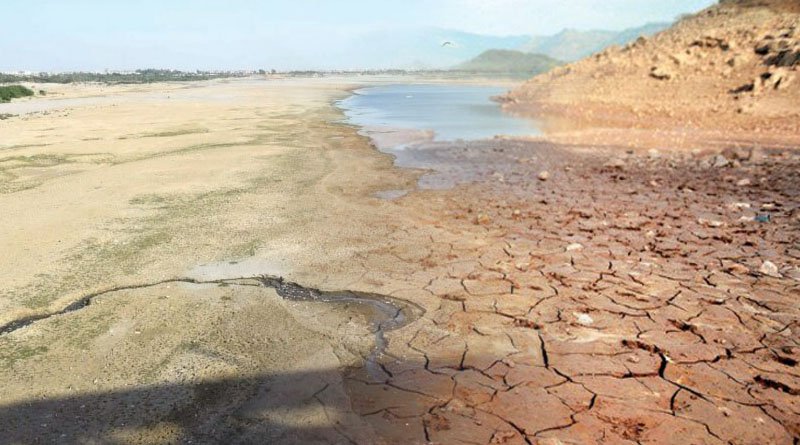The Indus system and its tributaries, which are primarily driven by snow and glacier melt in the larger Himalayas, serve as the nation’s sole water source.

In 1947, Pakistan was a country with an abundance of water, with more than 1600 cubic metres of water per person. Pakistan may soon be one of the countries with low water availability (less than 1000 m3 of water per person).
The Indus system and its tributaries, which are primarily driven by snow and glacier melt in the larger Himalayas, serve as the nation’s sole water source. Pakistan, which has a per capita water availability of 1017 cubic metres, is the third most susceptible country in terms of the water problem, according to the International Monetary Fund (IMF).
In terms of water use relative to GDP, Pakistan comes in first. Water is the primary resource for agriculture, yet there are growing problems with irrigated agriculture, such as insufficient water availability for crop productivity and ineffective irrigation.
Low water productivity is mostly hampered by over- or under irrigation. Pakistan will experience a severe water crisis by 2025. Water is life. One of the leading crises humans are going to face is water scarcity. A person who holds things in abundance forgets their importance.
Water is one of the blessings that is diminishing, and no one is caring. All efforts are underway, but still, the graph is going upward. A big challenge for developing and underdeveloped countries facing such a situation.
A water crisis is defined as “an inadequacy or insufficiency of water, or having water but not fit for use.” No issue is more critical than the water crisis for the globe. The third world war might be due to water.
Causes of water waste:
Industrialization
Industrial waste has a number of chemicals and heavy metals that pollute fresh water when it comes into contact with them. For example, textile, tanning, and leather factories have a huge amount of effluent.
Urbanization Sewerage Water: It is also a source of polluted fresh water.
Agriculture: Our flood irrigation system’s loss of water is about 90%. Seepage from rivers, canals, or water courses is another source of water loss. Personal waste through open taping without caring is another example of a lack of awareness.
Effects
Now life is under threat due to a shortage of water. Freshwater is becoming rare.
Solution
Its solution is best described by Hadith as “Do not waste a single drop of water, even if you are at a running stream.”
Awareness: Our first and foremost duty is to create awareness of the vitality of fresh water. We can use all kinds of media, e.g., parents should guide children directly through mass/print media and social media (WhatsApp, Twitter, Facebook, Instagram, etc.) to propagate the dangerous situation coming in the next few years. Awareness campaigns by arranging conferences, seminars, and congresses both in person and virtually would be effective.
Management Strategies: To save water in flood irrigation, drip, sprinkler, central pivot, and hose reel irrigation would be encouraged. The lining of canals and water courses to stop seepage loss of water should be subsidised.
Government Policies: There must be a water policy with a per-unit price of water even in those areas where water is sufficient, with the aim that this would be depleted if not charged. However, it must not be compulsory for poor communities.
This article is jointly authored by Dr. Mujahid Ali and Engr. Muhammad Mohsan from the Water Management Research Farm, Renala Khurd, Okara